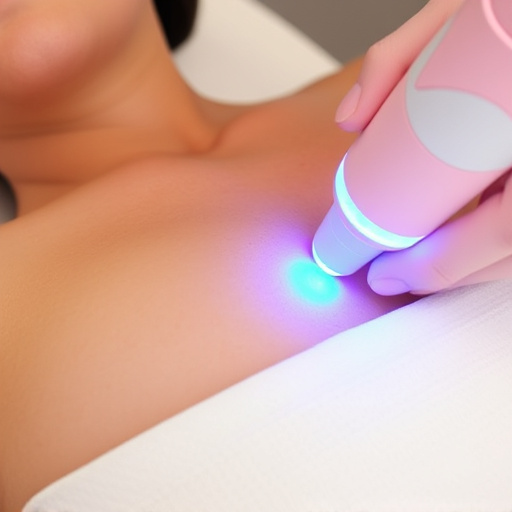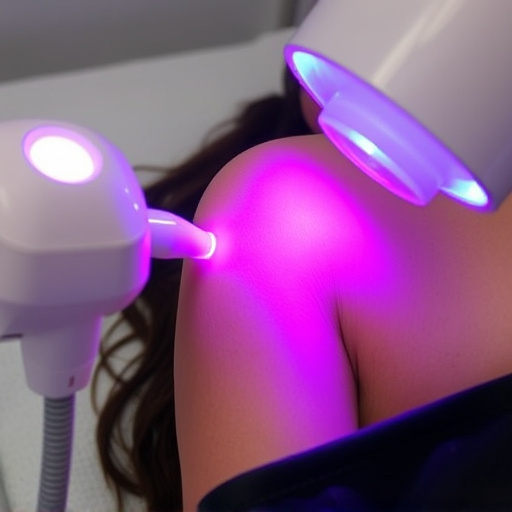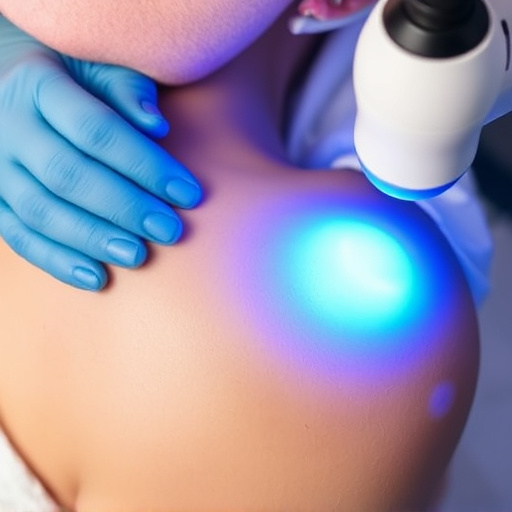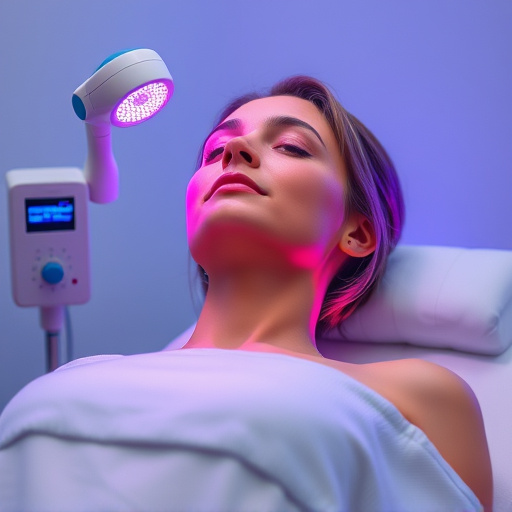Melasma, characterized by dark facial patches, has various causes including hormonal changes and sun exposure. Treatments range from non-surgical techniques like microneedling and skincare routines with hydroquinone and retinoids to more advanced procedures such as laser therapy, microdermabrasion, IPL, and chemical peels. Chemical exfoliation and retinoids are topically recommended by dermatologists for their effectiveness in improving skin texture, tone, and complexion.
Melasma, often referred to as ‘mask of pregnancy,’ is a skin condition characterized by dark patches on the face. This article explores effective melasma treatment options recommended by dermatologists. We’ll delve into understanding the causes and common triggers, followed by topical treatments like chemical exfoliation and retinoids. Additionally, we’ll cover non-topical procedures such as laser therapy, microdermabrasion, and in-office treatments. By the end, you’ll have a comprehensive guide to managing and reducing melasma.
- Understanding Melasma: Causes and Common Triggers
- Topical Treatments: Chemical Exfoliation and Retinoids
- Beyond Topicals: Laser Therapy, Microdermabrasion, and In-Office Procedures
Understanding Melasma: Causes and Common Triggers

Melasma, often referred to as ‘mask of pregnancy,’ is a common skin condition characterized by dark patches on the face. While it typically appears during or after pregnancy, it can also develop in non-pregnant individuals. Understanding its causes and triggers is essential when seeking effective melasma treatments.
The primary cause of melasma lies in hormonal fluctuations, particularly an increase in estrogen and progesterone levels. This imbalance often occurs during pregnancy or as a result of certain contraceptive methods. Sun exposure is another significant trigger; the ultraviolet rays from sunlight can stimulate melanin production, aggravating existing melasma or causing its development. Additionally, skin conditions like eczema and rosacea, as well as certain medications, can contribute to this skin discoloration. For many, melasma treatment involves non-surgical techniques such as microneedling therapy, which stimulates collagen production, and targeted skincare routines incorporating ingredients like hydroquinone and retinoids. In some cases, skin tightening procedures may be recommended for more severe or persistent cases.
Topical Treatments: Chemical Exfoliation and Retinoids

Chemical exfoliation and retinoids are two powerful topical treatments recommended by dermatologists for melasma management. Chemical exfoliants, with their ability to slough off dead skin cells, help unclog pores and enhance skin cell turnover, which is crucial in reducing the appearance of melasma patches. These treatments also stimulate collagen production, a key factor in achieving smoother, more even skin texture.
Retinoids, on the other hand, are known for their remarkable effects on skin rejuvenation. They work by increasing cell turnover and enhancing the appearance of fine lines and wrinkles, often associated with melasma. Additionally, retinoids have anti-inflammatory properties that can soothe irritated skin and help manage hyperpigmentation, a common characteristic of melasma. When used consistently, these topical treatments can contribute to significant improvements in skin texture, tone, and overall complexion, promoting a more radiant and rejuvenated look.
Beyond Topicals: Laser Therapy, Microdermabrasion, and In-Office Procedures

While topicals like hydroquinone, retinoids, and vitamin C serums remain popular melasma treatments, dermatologists also recommend several other effective procedures for those seeking comprehensive solutions. Beyond topical applications, laser therapy has emerged as a powerful tool for melting away melasma by targeting pigmented cells with precise light energy. This non-invasive approach not only improves skin tone but can also stimulate collagen production for added wrinkle reduction and skin tightening benefits.
Microdermabrasion, another highly effective facial treatment, scrubs away the top layer of dead skin cells to reveal smoother, brighter skin. For more intensive melasma treatments, dermatologists often perform in-office procedures such as intense pulsed light (IPL) therapy or chemical peels. These targeted interventions can be tailored to individual needs, offering significant improvements in skin texture and tone, with many patients experiencing noticeable results after just a few sessions.
Melasma can be a challenging skin condition to manage, but with the right melasma treatment approach, significant improvements are achievable. By understanding its causes and triggers, individuals can make informed decisions about their skincare routine. Topical treatments like chemical exfoliation and retinoids offer effective solutions for many, while more advanced procedures such as laser therapy and microdermabrasion provide additional options. Consulting a dermatologist is crucial to determining the best melasma treatment tailored to individual needs, ensuring optimal results and a clearer complexion.














